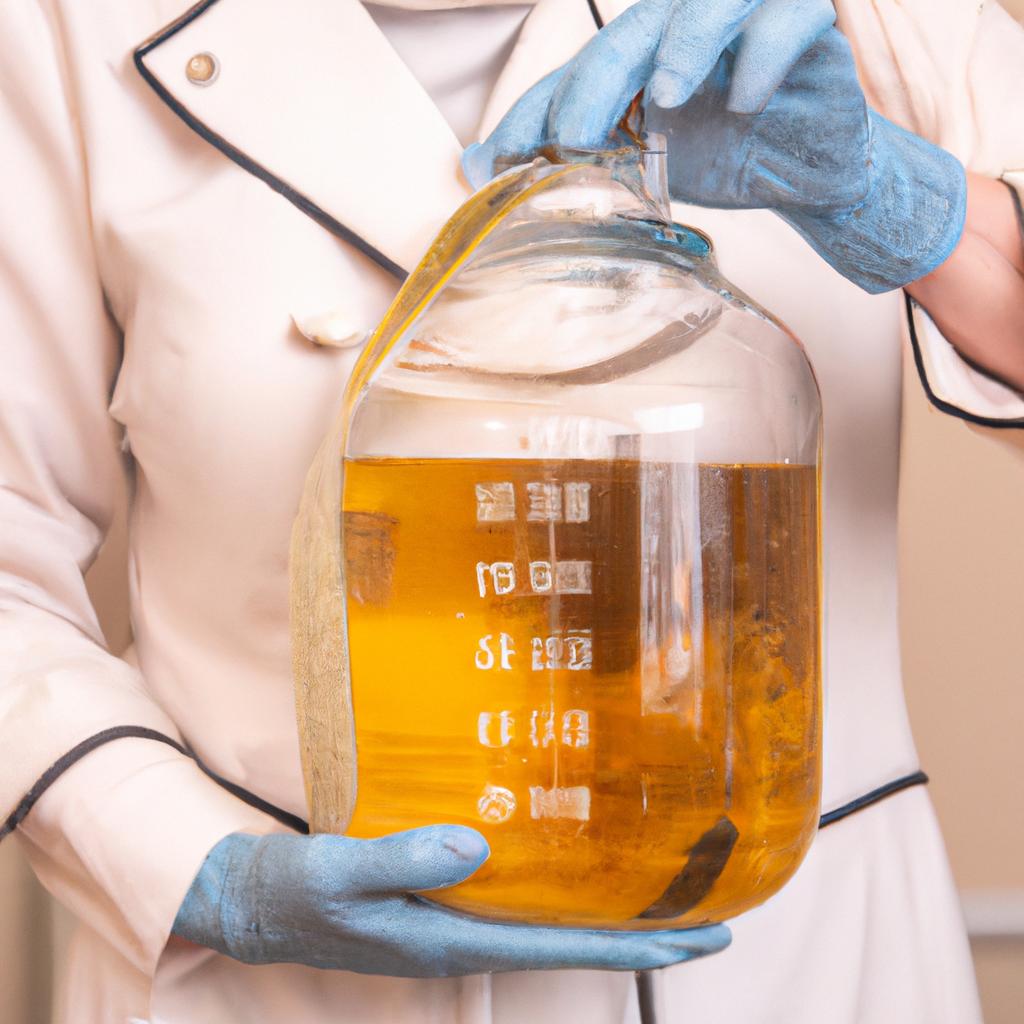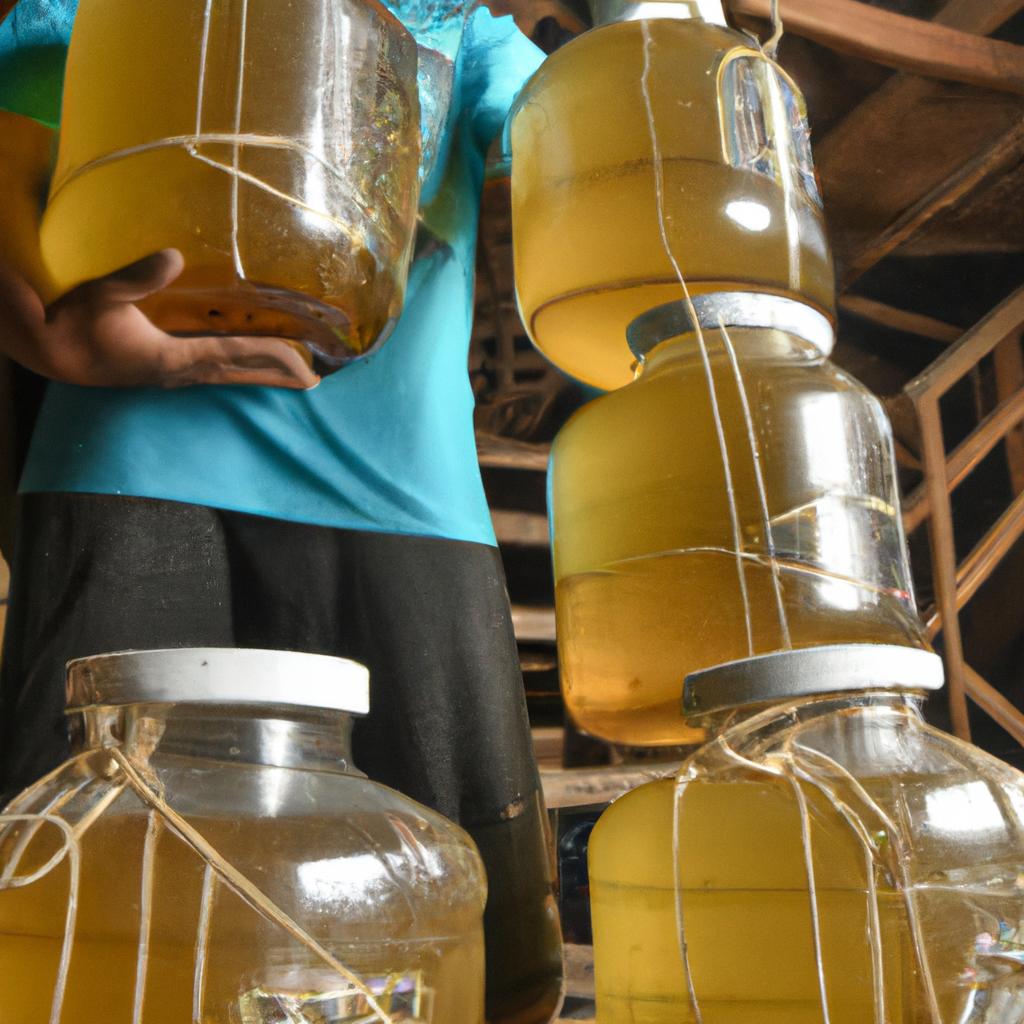Introduction

Honey is a popular natural sweetener that has been used for centuries in various cultures worldwide. It is known for its nutritional benefits and medicinal properties. However, one of the most critical factors to consider when working with honey is its weight. Beekeepers, bakers, and chefs all need to know the weight of honey to measure it accurately, whether for sale or cooking.
Understanding Honey Density

To determine the weight of honey, one must first understand honey density. Honey density refers to the mass of honey per unit volume. It is expressed in grams per milliliter (g/mL) or pounds per gallon (lb/gal). The density of honey is affected by various factors, including its moisture content, temperature, and type of honey.
The moisture content of honey can vary depending on the honey’s source and the beekeeping process. The more water present in honey, the less dense it is. The temperature also plays a role in honey density. As temperature increases, honey expands, causing it to become less dense. Conversely, as temperature decreases, honey contracts, causing it to become more dense. Finally, different types of honey have varying densities. Darker honey, such as buckwheat honey, is generally more dense than lighter honey, such as clover honey.
There are various methods of measuring honey density, including using a hydrometer, a refractometer, or a scale. A hydrometer measures the density of honey by floating in a sample of honey and reading the scale at the liquid’s surface. A refractometer measures honey density by measuring the degree to which light refracts through a honey sample. Finally, a scale measures honey density by weighing the honey and calculating its volume.
Now, let’s dive into the weight of honey per gallon in the next section.
How Much Does a Gallon of Honey Weigh?
Calculating the weight of honey per gallon is essential for beekeepers, honey traders, and customers. A gallon of honey is equivalent to 3.785 liters, and its weight varies depending on its density. The weight of honey per gallon ranges from 11 pounds to 15.5 pounds, equivalent to 5 kg to 7 kg.
The average weight of honey per gallon is 12 pounds, equivalent to 5.4 kg. However, honey density varies depending on the type of honey and its moisture content. For example, lighter honey, such as clover honey, weighs 11 pounds per gallon, while darker honey, such as buckwheat honey, weighs up to 15.5 pounds per gallon. Honey with high moisture content, such as honey harvested during rainy seasons, is less dense and weighs less than honey with low moisture content.
It is also essential to note that the weight of honey per gallon can vary depending on the packaging method. For example, honey packed in glass jars weighs more than honey packed in plastic containers.
In comparison with other liquids, honey is denser than water, milk, and most other liquids. A gallon of water weighs 8.34 pounds, while a gallon of milk weighs approximately 8.6 pounds. Therefore, a gallon of honey is almost twice as heavy as a gallon of water or milk.
Importance of Accurately Measuring Honey Weight
Accurately measuring honey weight is crucial in various industries, including the honey trade, baking and cooking, and health and nutrition. In the honey trade, honey is sold by weight, and inaccurate measurements can lead to financial losses for both buyers and sellers. Beekeepers must also measure honey weight to determine the honey’s value and set prices for their products.
In baking and cooking, recipes require accurate measurements of honey to ensure the perfect consistency and taste. Inaccurate measurements can cause recipes to fail or result in undesirable flavors and textures.
Finally, accurate measurements of honey weight are crucial in health and nutrition. Honey is a natural sweetener that is high in calories and sugar. Therefore, it is essential to measure honey accurately to monitor sugar intake for those with diabetes or other dietary restrictions.
In conclusion, understanding honey density and the weight of honey per gallon is crucial in various industries, including beekeeping, baking, and cooking, health and nutrition, and honey trade. Accurate measurements of honey weight ensure consistency, quality, and fair pricing. BeeKeepingLove.com encourages beekeepers, traders, and consumers to measure honey accurately to enjoy the full benefits of this natural sweetener.
Converting Honey Measurements
Once you have measured the weight of honey, you may need to convert it to volume or other units of measurement. Converting honey weight to volume is relatively simple, as you just need to know the honey’s density. For example, if you have 1 lb of honey with a density of 1.5 lb/gal, you can calculate the volume by dividing the weight by the density: 1 lb ÷ 1.5 lb/gal = 0.67 gallons.
Conversely, if you have the volume of honey and want to convert it to weight, you need to know the density. For example, if you have 0.5 gallons of honey with a density of 1.2 lb/gal, you can calculate the weight by multiplying the volume by the density: 0.5 gallons x 1.2 lb/gal = 0.6 lbs.
You can also convert honey weight and volume to other units of measurement, such as kilograms, liters, or ounces. Online conversion tools are available to simplify this process.
Conclusion
Knowing the weight of honey per gallon is essential for beekeepers, bakers, and chefs alike. The density of honey varies based on several factors, including moisture content, temperature, and type. Measuring honey density using a hydrometer, refractometer, or scale is necessary to calculate honey weight accurately.
Converting honey measurements between weight and volume or other units is a straightforward process once you know the honey’s density. Accurately measuring honey weight and volume is critical for precise cooking and baking, as well as for fair trade practices in the honey industry.
In conclusion, understanding honey density and weight is essential for all honey enthusiasts. By knowing the weight of honey per gallon, beekeepers, bakers, and chefs can make the most of this natural sweetener. At BeeKeepinglove.com, we value the importance of accurate honey measurement and hope this article has been informative and helpful.
